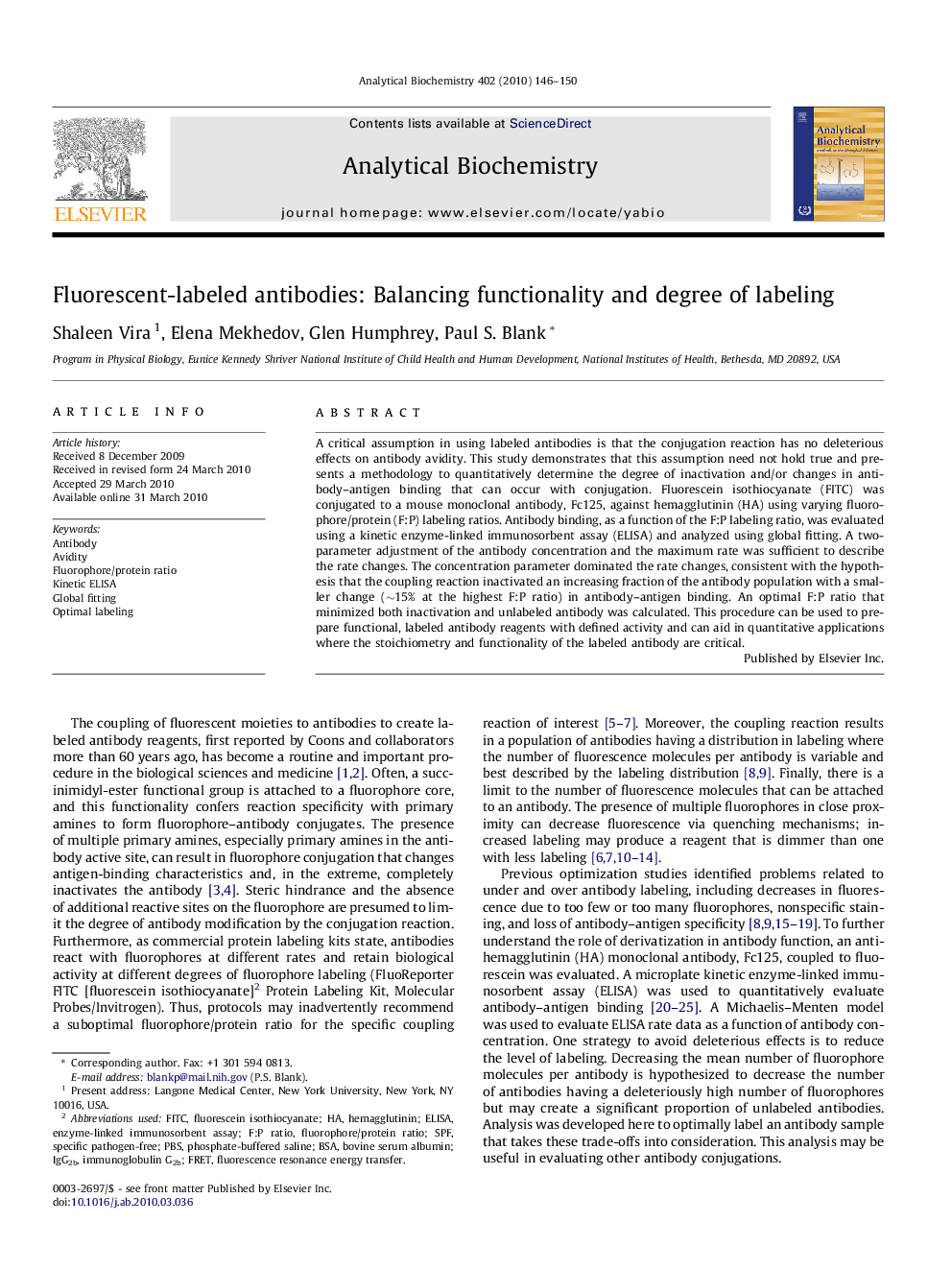| Article ID | Journal | Published Year | Pages | File Type |
|---|---|---|---|---|
| 10532862 | Analytical Biochemistry | 2010 | 5 Pages |
Abstract
A critical assumption in using labeled antibodies is that the conjugation reaction has no deleterious effects on antibody avidity. This study demonstrates that this assumption need not hold true and presents a methodology to quantitatively determine the degree of inactivation and/or changes in antibody-antigen binding that can occur with conjugation. Fluorescein isothiocyanate (FITC) was conjugated to a mouse monoclonal antibody, Fc125, against hemagglutinin (HA) using varying fluorophore/protein (F:P) labeling ratios. Antibody binding, as a function of the F:P labeling ratio, was evaluated using a kinetic enzyme-linked immunosorbent assay (ELISA) and analyzed using global fitting. A two-parameter adjustment of the antibody concentration and the maximum rate was sufficient to describe the rate changes. The concentration parameter dominated the rate changes, consistent with the hypothesis that the coupling reaction inactivated an increasing fraction of the antibody population with a smaller change (â¼15% at the highest F:P ratio) in antibody-antigen binding. An optimal F:P ratio that minimized both inactivation and unlabeled antibody was calculated. This procedure can be used to prepare functional, labeled antibody reagents with defined activity and can aid in quantitative applications where the stoichiometry and functionality of the labeled antibody are critical.
Keywords
Related Topics
Physical Sciences and Engineering
Chemistry
Analytical Chemistry
Authors
Shaleen Vira, Elena Mekhedov, Glen Humphrey, Paul S. Blank,
